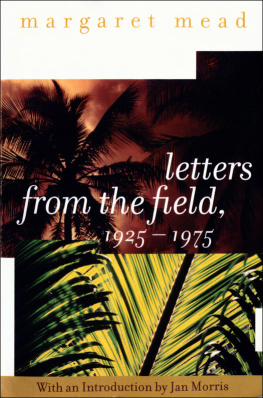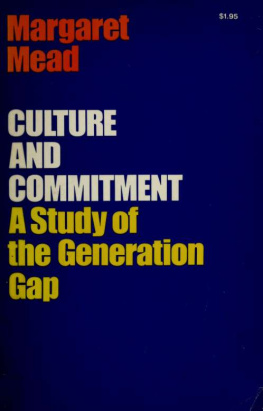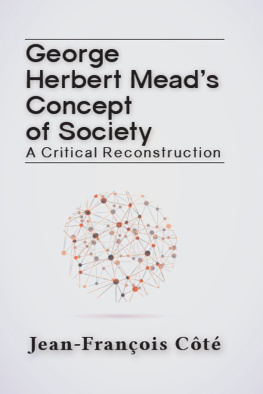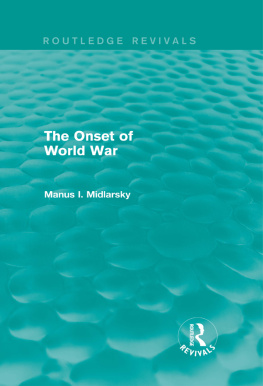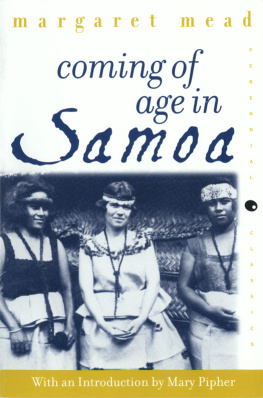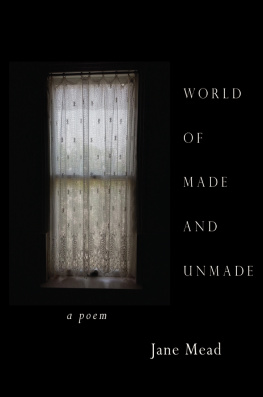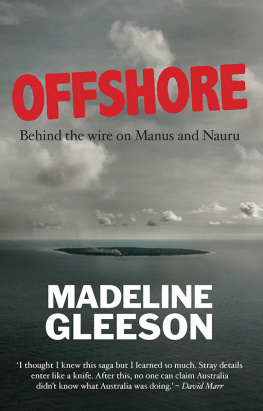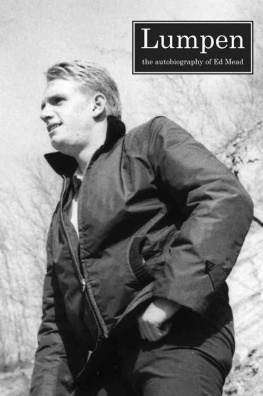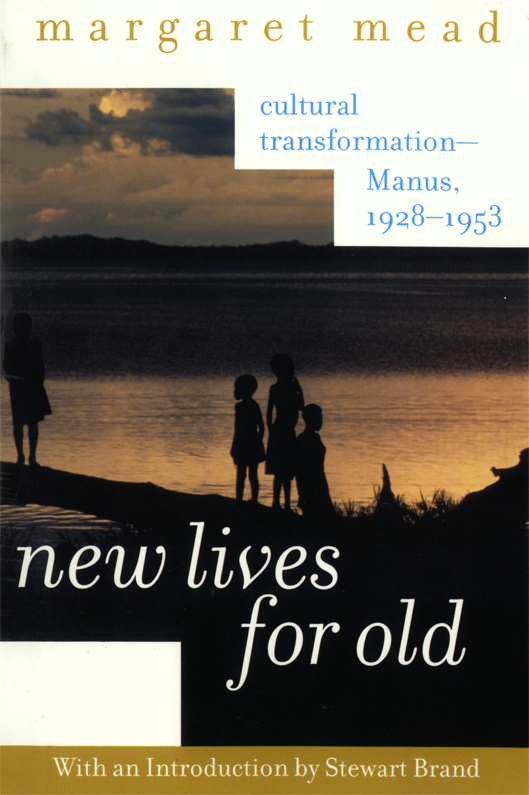Dedicated in 1977 to
His Honour Judge Phillips
Chief Justice of the Territory
of Papua and New Guinea
contents
Guide
The illustrations will be found in one section following page 180.
by Mary Catherine Bateson
When my mother, Margaret Mead, was ready to seek a publisher for her first book, Coming of Age in Samoa, she found her way to William Morrow, the head of a new publishing company, and he gave her a key suggestion for the rest of her career, that she add more about what all this means to Americans. This set a course she followed throughout her life, establishing not only the appeal of anthropology as a depiction of the exotic but as a source of self-knowledge for Western civilization. The last chapter of Coming of Age laid out a theme for the years ahead: Education for Choice.
Even before World War II, still using the terminology of her time that now seems so outmoded and speaking of primitives or even of savages, she believed that Americans should learn not only about the peoples of the Pacific, but from them. And after almost every field trip she went back to William Morrow, now HarperCollins, where many of her books have remained in print ever since, offering new meanings to new generations of Americans. A century after her birth, they are offered once again, now for a new millennium, and today they still have much to offer on how individuals mature in their social settings and how human communities can adapt to change.
Several of Meads field trips focused on childhood. Writers have been telling parents how to raise their children for centuries; however, the systematic observation of child development was then just beginning, and she was among the first to study it cross-culturally. She was one of those feminists who have combined an assertion of the need to make women full and equal participants in society with a continuing fascination with children and a concern for meeting their needs. A culture that repudiated children could not be a good culture, she believed. [Blackberry Winter: My Earlier Years, New York: William Morrow and Company, 1972, p. 206.]
After studying adolescents in Samoa, she studied earlier childhood in Manus (Growing Up in New Guinea) and the care of infants and toddlers in Bali; everywhere she went, she included women and children, who had been largely invisible to earlier researchers. Her work continues to affect the way parents, teachers, and policy makers look at children. I, for one, am grateful that what she learned from the sophisticated and sensitive patterns of childcare she observed in other cultures resonated in my own childhood. Similarly, I have been liberated by the way her interest in women as mothers expanded into her work on gender (Sex and Temperament and Male and Female).
In addition to this growing understanding of the choices in gender roles and childrearing, the other theme that emerged from her fieldwork was change. The first postwar account of fieldwork that she brought to her longtime publisher described her 1953 return to the Manus people of New Guinea, New Lives for Old. This was not a book about how traditional cultures are eroded and damaged by change but about the possibility of a society choosing change and giving a direction to their own futures. Mead is sometimes labeled a cultural determinist (so obsessed are we with reducing every thinker to a single label). The term does reflect her belief that the differences in expected behavior and character between societies (for instance, between the Samoans and the Manus) are largely learned in childhood, shaped by cultural patterns passed on through the generations that channel the biological potentials of every child, rather than by genetics. Because culture is a human artifact that can be reshaped, rather than an inborn destiny, she was not a simple determinist, and her convictions about social policy always included a faith in the human capacity to learn. After the 1950s, Mead wrote constantly about change, how it occurs, and how human communities can maintain the necessary threads of connection across the generations and still make choices. In that sense, hers was an anthropology of human freedom.
Eventually, Mead wrote for Morrow the story of her own earlier years, Blackberry Winter, out of the conviction that her upbringing by highly progressive and intellectual parents had made her ahead of her time, so that looking at her experience would serve those born generations later. She never wrote in full of her later years, but she did publish a series of letters, written to friends, family, and colleagues over the course of fifty years of fieldwork, that bring the encounter with unfamiliar cultures closer to our own musings. Although Letters from the Field was published elsewhere, by Harper & Row, corporate metamorphoses have for once been serendipitous and made it possible to include Letters from the Field in this HarperCollins series, where it belongs. Mead often wrote for other publishers, but this particular set of books was linked by that early desire to spell out what her personal and professional experience could and should mean to Americans. That desire led her to write for Redbook and to appear repeatedly on television, speaking optimistically and urgently about our ability to make the right choices. Unlike many intellectuals, she was convinced of the intelligence of general readers, just as she was convinced of the essential goodness of democratic institutions. Addressing the public with respect and affection, she became a household name.
Margaret Meads work has gone through many editions, and the details of her observations and interpretations have been repeatedly critiqued and amended, as all pioneering scientific work must be. In spite of occasional opportunistic attacks, her colleagues continue to value her visionary and groundbreaking work. But in preparing this series, we felt it was important to seek introductions outside of ethnography that would focus on the themes of the books as seen from the point of view of Americans today who are concerned about how we educate our children, how we provide for the full participation of all members of society, and how we plan for the future. Times change, but comparison is always illuminating and always suggests the possibility of choice. Teenage girls in Samoa in the 1920s provided an illuminating comparison with American teenagers of that era, who were still living in the shadow of the Victorian age, and they provide an equally illuminating comparison with girls today, who are under early pressure from demands on their sexuality and their gender. Preteen boys in Manus allow us to examine alternative emphases on physical skills and on imagination in childhoodand do so across fifty years of debate about how to offer our children both. Gender roles that were being challenged when Mead was growing up reverted during the postwar resurgence of domesticity and have once again opened upbut the most important fact to remember about gender is that it is culturally constructed and that human beings can play with the biology of sex in many different ways. So we read these books with their echoes not only of distant climes but also of different moments in American history, in order to learn from the many ways of being human how to make better choices for the future.
Margaret Mead was short and female. To manage that in a world of science dominated by tall males, she spoke firmly and carried a big sticka long forked staff, set off by the dramatic cape she wore in public. Yet she was so compassionate a field anthropologist that informants named their children after her. Decades before Carl Sagan and other scientists learned to write directly to the public, Mead was writing bestsellers like


